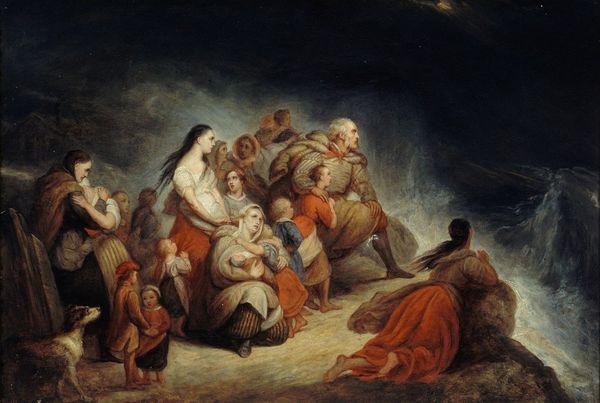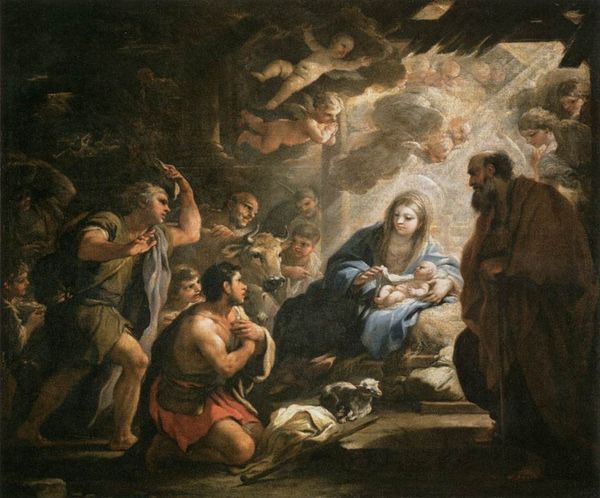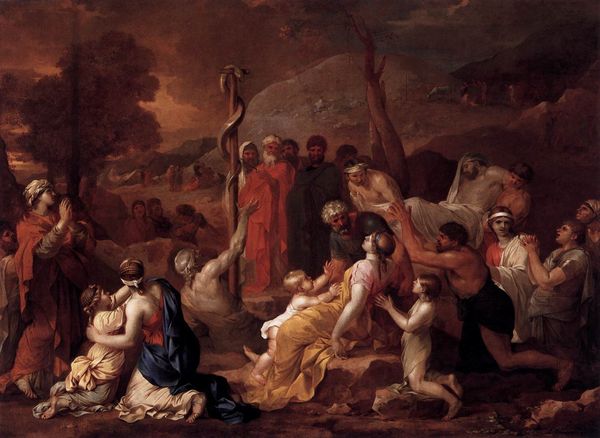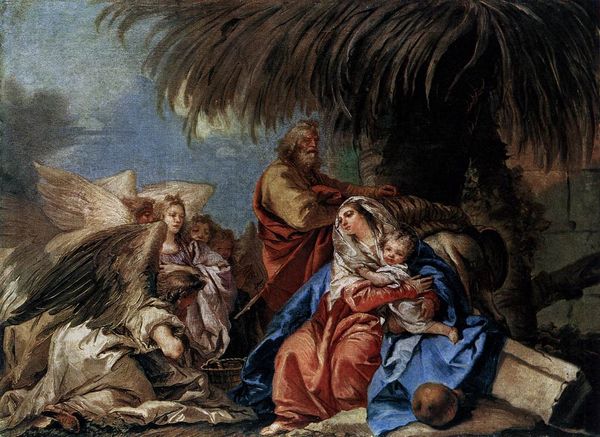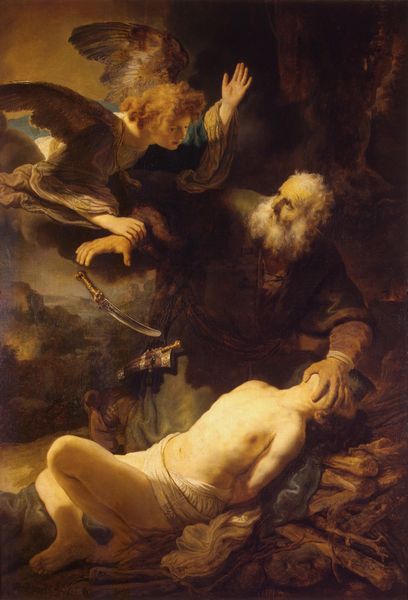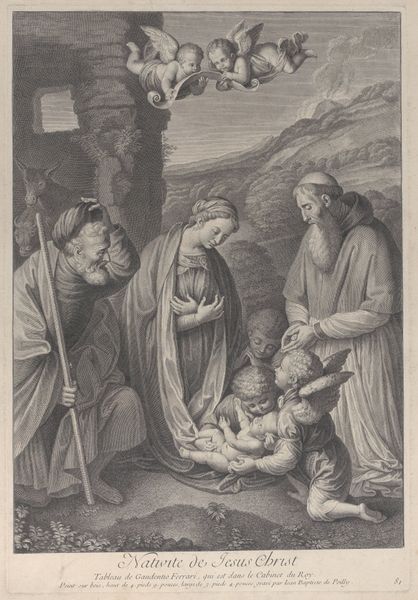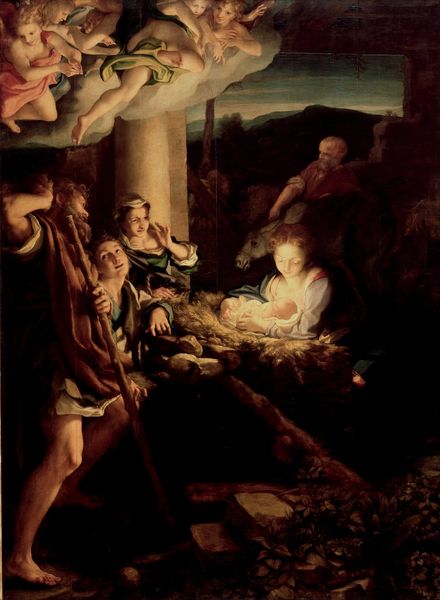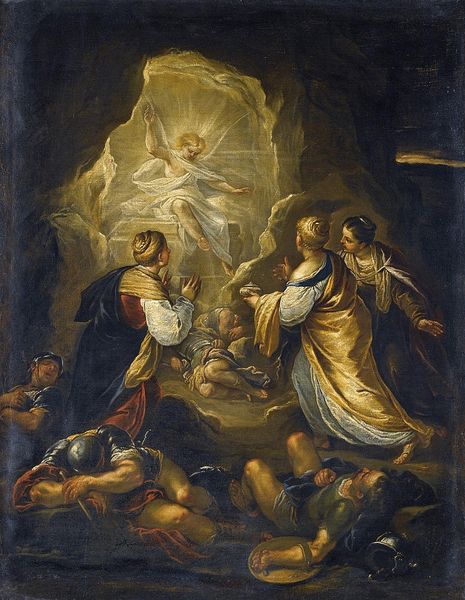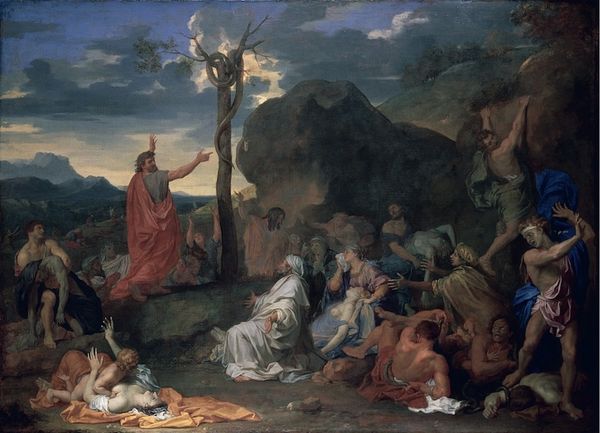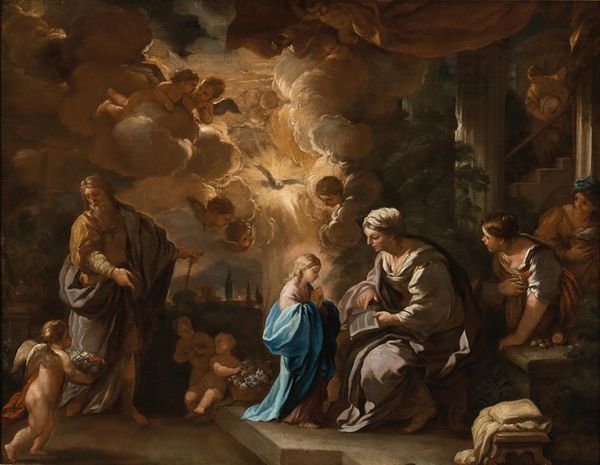
oil-paint
#
baroque
#
oil-paint
#
landscape
#
oil painting
#
history-painting
Copyright: Public Domain: Artvee
Editor: This is Luca Giordano's "Flight into Egypt," painted with oils sometime between 1690 and 1705. I am struck by how the landscape seems to swallow the figures; it gives a feeling of vulnerability, of being exposed in a vast world. What do you see in this piece? Curator: Focusing solely on its formal attributes, notice how Giordano employs a chiaroscuro technique. The strategic play of light and shadow is not merely representational; it sculpts the scene, emphasizing the dramatic tension between refuge and the threatening immensity. The diagonal composition directs our gaze upward, implying a sense of divine intervention. Editor: So, the use of light isn’t just about showing us the figures; it's actively creating a feeling? Curator: Precisely. Furthermore, examine the artist’s brushstrokes. They are loose and gestural, lacking a hard outline, which contributes to the scene's dynamic energy. The materiality of the paint itself, thickly applied in certain areas, creates a tactile quality. Can you see how the texture amplifies the overall expressive power of the image? Editor: I see it now; the roughness adds to that sense of vulnerability I felt earlier. So, we can understand the emotional impact of the artwork by looking at how it is structured visually. Curator: Precisely. By examining the intrinsic elements—light, composition, brushstroke, and material—we unveil the painting’s complex and cohesive language. Editor: I’ve never really thought about brushstrokes communicating feelings, but that makes so much sense. Thanks for this new way of appreciating Giordano’s painting! Curator: My pleasure. Paying close attention to the materiality of art helps to better understand a variety of media and processes.
Comments
No comments
Be the first to comment and join the conversation on the ultimate creative platform.
